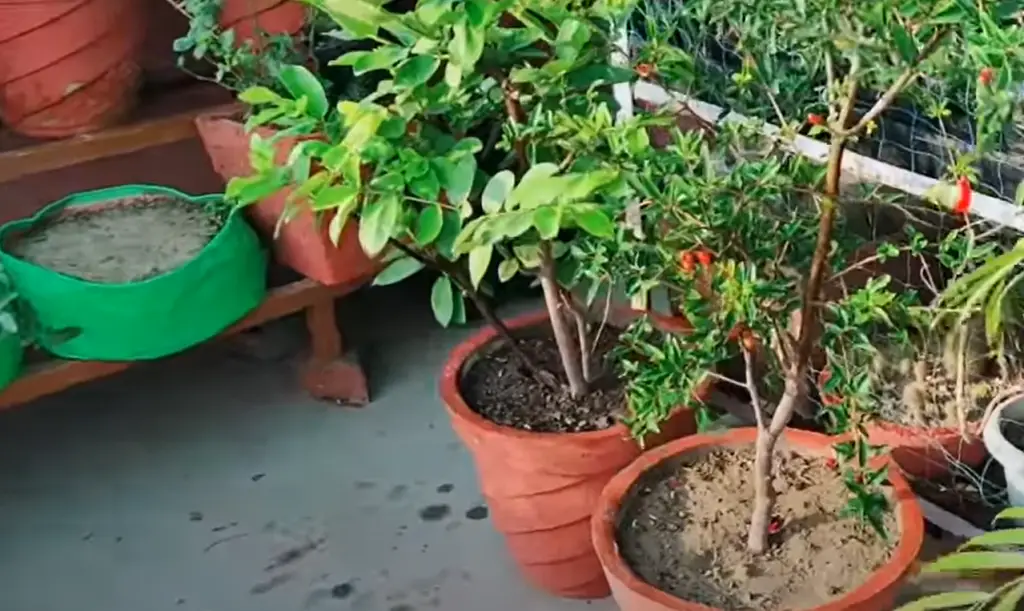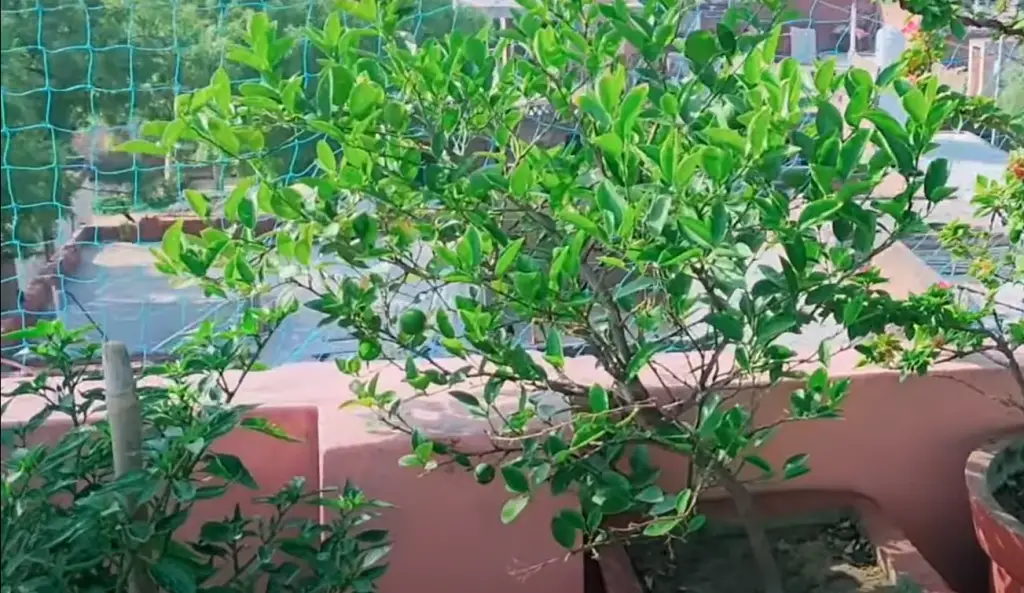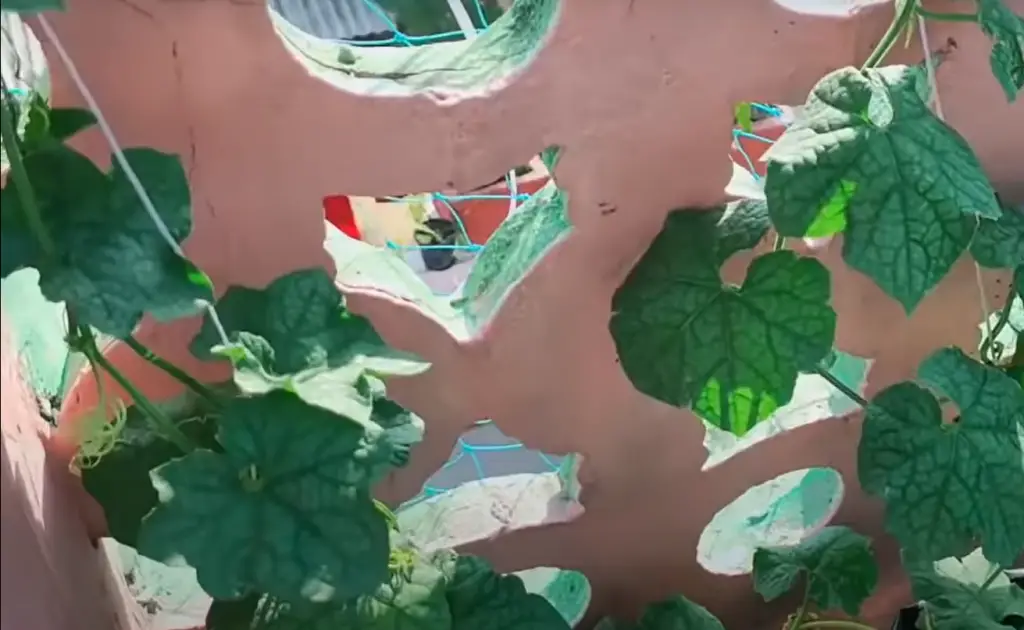If you’re looking to add a touch of green to your urban dwelling, look no further than terrace gardening! Creating a garden on your terrace can provide many benefits, including improved air quality, reduced noise levels, and aesthetic appeal.
In this guide, we will answer some common questions about terrace gardening and provide tips for creating a beautiful and functional garden space. Let’s get started.
Making a Terrace Garden
One of the first things you need to do when planning your terrace garden is to decide on the location. You will want to choose a spot that gets plenty of sunlight and has good drainage. Once you have chosen the perfect location, you will need to start excavating the area. Be sure to excavate to a depth of at least 18 inches.
After you have excavated the area, you will need to fill it with soil.
Once you have filled the area with soil, you will need to add some organic matter. This can be in the form of compost or manure. Be sure to mix the organic matter into the soil thoroughly.The next step is to add plants to your terrace garden. You will want to choose plants that are well-suited for your climate and that will thrive in the conditions you can provide. Once you have chosen your plants, you will need to plant them. Be sure to water them regularly and fertilise them according to their needs.

By following these simple steps, you will be able to create a beautiful terrace garden that will provide you with years of enjoyment. Remember, the key to success is in the planning. So take your time and make sure you do it right.
Steps to Set-Up Terrace Garden
Plan the Layout
The first step is to determine the size and shape of your garden. Will it be a rectangular raised bed? A series of square planters? Once you know the dimensions, sketch out a rough layout so you have an idea of where everything will go. [1]
Select the Plants
To choose plants for your terrace garden, you’ll need to think about a few things. Consider the climate and how much sun or shade the area gets. Also think about whether the space is protected from wind. You’ll also want to think about what kind of maintenance you’re willing to do; some plants require more care than others. Once you’ve narrowed down your choices, visit a local nursery or garden centre to get started.
Some plants that grow well in the shade are impatiens, coleus, ferns, and hostas. If your terrace gets more sun, you might want to consider planting petunias, marigolds, zinnias, or sunflowers.
There are also many herbs that do well in both sunny and shady areas, such as basil, oregano, rosemary, and thyme. Once you’ve decided what plants you want to grow, it’s time to get started on the next steps. [1]
Water – Proofing
One of the most important things to consider when making a terrace garden is how to waterproof your garden. There are a few different ways that you can do this, and the best way will depend on the materials that you are using for your garden.
If you are using concrete or stone, then you will need to seal the surface with a waterproofing sealant. If you are using wood, then you will need to treat the wood with a water-resistant stain or sealer.
It is also important to make sure that your garden has good drainage. This means that you will need to install some type of drainage system, such as gutters, in order to prevent water from pooling on your terrace.

Finally, you will also need to consider how you are going to water your plants. If you live in an area with a lot of rainfall, then you might not need to worry about this too much.
However, if you live in a dry climate, then you will need to make sure that you have a way to water your plants on a regular basis. One option is to install a drip irrigation system, which will deliver water to your plants slowly and evenly.
Preparing the Soil
The first step is to assess the quality of your soil. If you have good quality topsoil, you can skip this step and move on to preparing the site. If not, you’ll need to improve the quality of your soil before planting.
You can also add in sand to improve drainage.Now that the soil quality has improved, it’s time to prepare the site. If you’re starting from scratch, you’ll need to clear the area of any debris and level it off. If you’re working with an existing garden, you’ll need to remove all existing plants and weeds. Be sure to loosen the soil before planting anything. [1]
Plant Containers or Pots
Arrange them in groups or rows to create a desired look. You can use annuals, perennials, vegetables, and herbs in your container garden. Be sure to choose plants that will do well in the amount of sunlight available on your terrace.
Water your plants regularly, as containers dry out quickly. Use a fertiliser designed for containers to keep your plants healthy.
You can create a terrace garden even if you don’t have a lot of space. By using containers and pots, you can grow a wide variety of plants in a small area. Be sure to choose plants that will do well in the amount of sunlight available on your terrace, and water them regularly.
With a little effort, you can have a beautiful terrace garden that will provide you with fresh air, beauty, and relaxation.
Seeds
You can find these at your local nursery or online. Make sure to get seeds that are appropriate for your climate and soil type.
Once you have your seeds, it’s time to start planting. You can either plant them directly in the ground or in pots. If you’re using pots, make sure they have drainage holes so the water can drain out. Otherwise, your plants will drown.

To plant the seeds, simply dig a small hole in the soil and drop them in. Then, lightly cover them with soil and water them well. You should see sprouts in a few days to a week. [1]
Watering and Additional Requirements
In order to maintain a healthy terrace garden, you will need to water your plants regularly. Depending on the climate and weather conditions, you may need to water your garden daily or every other day. Plants in pots will require more frequent watering than those planted in the ground.
It is important to check the soil moisture levels before watering to avoid overwatering. To check the moisture levels, insert your finger into the soil up to the first knuckle. If the soil is dry, it is time to water. If the soil is damp or wet, wait a day or two before watering.
In addition to regular watering, your terrace garden will need some additional care and requirements. Fertilising your plants every few weeks will help them to grow and stay healthy. You can use a liquid fertiliser or slow-release pellets.
Weeding is also important to keep your garden looking neat and tidy. Be sure to pull up any weeds that appear regularly. Mulching your garden with organic materials will help to prevent weeds from growing.
Last but not least, don’t forget to deadhead your plants! Deadheading is the process of removing dead or dying flowers from your plants. This will encourage new growth and prevent your plants from looking overgrown.
Terrace Garden Design and Materials
When it comes to design, there are many different ways to approach a terrace garden. For example, you might choose to go with a more traditional look, or opt for a more modern aesthetic. Whichever route you decide to take, be sure to consider the following factors:
- The size of your terrace
- The shape of your terrace
- The layout of your terrace
- The type of plants you want to grow
- The type of soil you have
Once you have a good idea of what you want your garden to look like, it’s time to start thinking about materials. If you’re starting from scratch, you’ll need to purchase:
- Tiles or pavers for the flooring.
- Timber for the edging.
- Soil and mulch.
- Plants.

If you’re working with an existing terrace, you’ll still need to purchase soil and mulch, as well as any plants you want to add. You may also need to replace some of the existing tiles or pavers, depending on their condition. [3]
FAQ
How Do You Make a Small Terrace Garden?
There are a few things you’ll need to do to make a small terrace garden, including:
- Choose the right location. A terrace garden is usually built on a level part of your yard that gets plenty of sunlight. If you have a deck or patio, that’s often the perfect spot.
- Decide what type of garden you want. A terrace garden can be either formal or informal, depending on your style.
- Choose the right plants. Not all plants do well in a terrace garden, so it’s important to select ones that will thrive in your particular climate and soil conditions.
- Put down a weed barrier. This will help prevent weeds from taking over your garden and crowding out your plants.
- Add some mulch. This will help retain moisture and keep the roots of your plants cool.
With a little planning and effort, you can have a beautiful terrace garden that will add both style and function to your outdoor space.
Which Plant is Best for a Terrace Garden?
There is no definitive answer to this question as it depends on a number of factors, such as the climate, the amount of sunlight available, and the type of soil. However, some plants that are generally well-suited to terrace gardens include succulents, cacti, herbs, and vegetables.
When choosing plants for your terrace garden, it is important to consider the amount of sunlight and shade that the space receives. If the terrace gets a lot of direct sunlight, opt for heat-tolerant plants that can withstand intense sun exposure. Conversely, if the space is mostly shaded, choose plants that thrive in low-light conditions.
How Do I Build a Terrace?
Building a terrace is not as hard as it may seem. The most important thing to keep in mind is that the foundation of your terrace must be level and stable. To achieve this, you will need to use some type of retaining wall system. The most common type of retaining wall system is the interlocking block system.
It is made up of modular units that are stacked on top of each other to create a solid wall. Another type of retaining wall system is the poured concrete system. It uses concrete that is poured into forms to create the walls.
First, you need to choose the type of retaining wall system you will use.
Then, you need to excavate the area where the terrace will be built. The excavation should be about two feet wider than the planned width of the terrace and about four feet longer than the planned length of the terrace. Its depth will depend on how high your retaining wall will be.
After you have excavated the area, you will need to level the ground. This can be done with a hand tamper or a power tiller. Once the ground is level, you will need to install the retaining wall system.
It is not as difficult as it may seem. The most important thing to remember is that the first course of blocks must be level and the blocks must be properly aligned. Once the first course is in place, you will need to backfill the area behind the wall with gravel.
After that, you will need to install a drainage pipe. The drainage pipe should be perforated and should be installed at the base of the retaining wall. The pipe should then be connected to a drain outlet that will allow the water to flow away from the terrace.
Once the drainage system is in place, you will need to install a layer of filter fabric over the gravel. This will help to prevent any soil from washing into the drainage pipe.
The next step is to install the pavers. They should be laid in a pattern that will allow for proper drainage. Once the pavers are in place, you will need to fill the joints between the pavers with sand.
The final step is to apply a sealer to the pavers. This will help to protect the pavers and will also give them a shine.
How Do You Make a Tiered Garden On a Hill?
Building a tiered garden is a great way to make use of a sloped or hilly lot. By terracing the land, you can create level areas for planting, walking, and relaxing. Terraces can be built with a variety of materials, including stone, brick, wood, and concrete.
Useful Video: How to Make a Terrace Vegetables Garden
Conclusion
If you are looking for a way to add some life and colour to your outdoor space, consider creating a terrace garden. Not only will this be a beautiful addition to your home, but it can also provide you with fresh fruits and vegetables all year round.
Follow these simple steps to get started on your very own terrace garden today!
References:
- https://krishijagran.com/agripedia/easy-steps-to-set-up-terrace-garden/
- https://gharpedia.com/blog/make-terrace-garden/
- https://www.gardeningknowhow.com/garden-how-to/projects/building-terrace-gardens.htm










Leave a Reply
View Comments